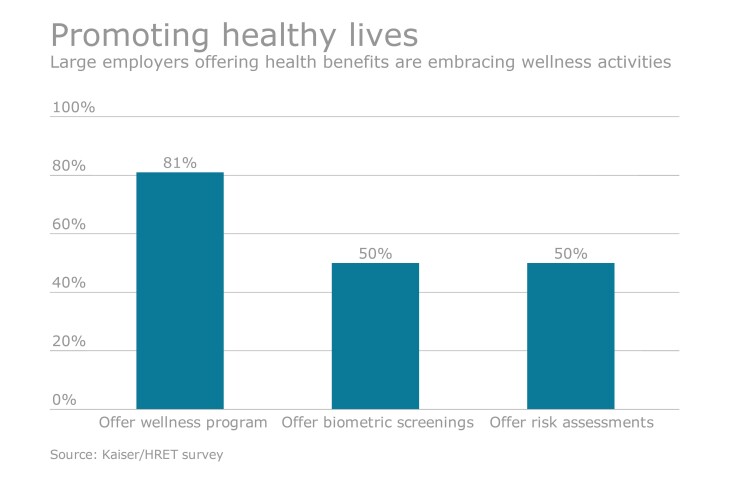Employers hoping to improve their company’s stock performance may want to look at what wellness programs they’re offering workers.
Three studies earlier this year found a correlation between stock performance and effective workplace health programs. One study tracked winners of the C. Everett Koop National Health Award, given to companies with outstanding worksite health promotion and improvement programs. Socially responsible companies were found to do the same or better than their peers.

The second compared the financial performance of a portfolio of companies that scored highly on the HERO scorecard, a tool used to measure health management practices, and the S&P 500. The third did a similar comparison, but used companies that scored highly on an assessment for the Corporate Health Achievement Award.
In both cases, the S&P 500 was outperformed.
It would seem that, as the second study states, “good health is good business.”
“Companies that are socially responsible tend to do better stock-wise,” says Ron Goetzel, the president of Consulting and Applied Research at Truven Health Analytics and senior scientist at Johns Hopkins Bloomberg School of Public Health. He was involved in two of the studies.
Intangible benefits
He says that the roots of this correlation can be traced back to links between employee health and company performance. At first, employers had in mind using wellness programs to decrease healthcare costs, but there is a new and increasing focus on less immediately tangible benefits.
These intangible benefits include higher employee retention rates, engagement rates, efficiency and satisfaction. It also helps companies build up a better reputation in their industry, attracting new employees and business.
From a financial perspective, investors seem to be taking notice of the importance of the intangible benefits of quality wellness programs. With healthier and more efficient employees usually comes better work. But there’s also an ethical draw to invest in companies that treat their employees well.
“People are really interested in how you’re treating your workers,” says Jessica Grossmeier, the vice president of research at HERO, who was also involved in two of the three studies. “Shareholders are interested. People are deciding to invest in companies that are socially responsible.”
As more employers move toward quality wellness programs, it is important to note that the process is a long one. Goetzel says that a quick-fix solution is usually ineffective. The keys to making a program work include establishing a culture of health, measuring VOI rather than ROI, getting feedback from employees and offering incentives.
“Creating a healthy company culture isn’t easy to do,” Goetzel says. “It’s a way of life, not a program. It’s a long-term endeavor.”





